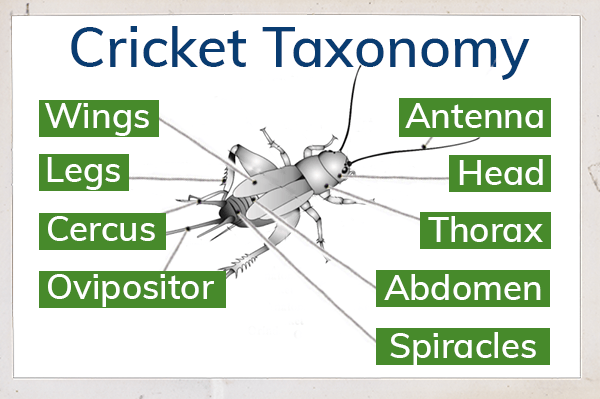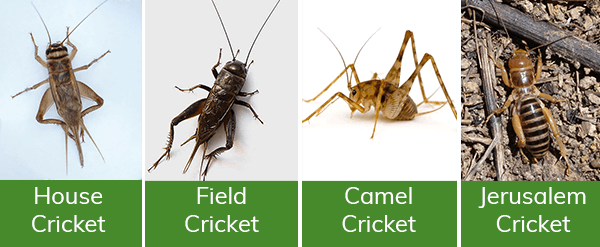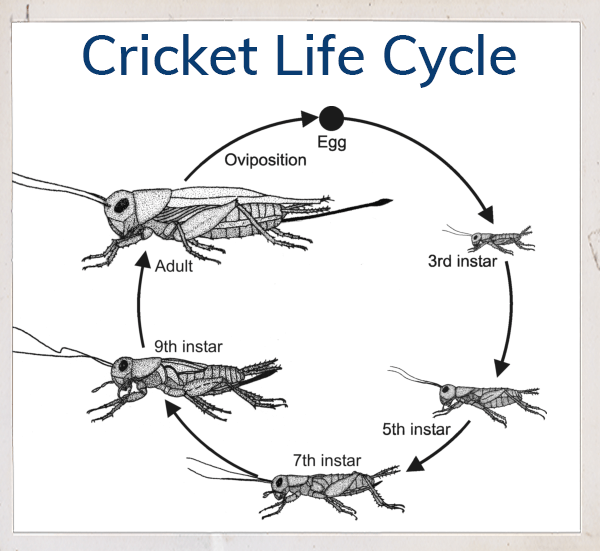Crickets can be a nuisance to California homeowners, as their chirping can keep you up all night! Not only that, but they can also destroy fabric and materials around your home. To prevent or remove a cricket infestation, you must first understand how they enter your property, their favorite food sources, and how to best prevent them. Knowing this information is essential for any California homeowner.
When it comes to food sources, crickets are omnivorous, which means they will eat a variety of plant and animal material, including paper products, fabrics, plants and even decaying wood. While their diet is quite varied, they are especially attracted to grains like rice and other starchy foods. They also prefer damp and dark areas, and can enter your home through small cracks and crevices, as well as through open windows and doors. To prevent an infestation, seal up any potential entry points, eliminate dampness and humidity, and remove any potential food sources.
It’s important for homeowners to learn more about crickets and how to prevent them from invading their homes. So, keep reading to learn about the importance of residential pest control in preventing cricket infestations and get some tips on how to identify and eliminate these pests yourself as well as other pests too, like silverfish, ants, cockroaches, spiders and pincher bugs, which can often accompany crickets if left untreated.
Cricket Appearance
Depending on the species, cricket can vary in size and appearance. Crickets are small insects, usually measuring from 0.1 to 0.8 inches in length, that can be found in residential homes and yards. They have thin antennae and back legs designed for jumping, as well as two pairs of wings – the first pair being short and stiff while the second is longer and used for flying. Coloration-wise, crickets vary depending on the species; they may be brown, tan, or dark in color.
When it comes to taxonomy, crickets belong to the order Orthoptera which includes other insects such as grasshoppers and katydids. Furthermore, there are over 900 species of cricket known today spread across 11 families with multiple subspecies within them. The most common type of residential cricket infestation is caused by house or field crickets (Acheta domesticus). Homeowners should note that having knowledge about cricket taxonomy can help them identify potential areas of their home where an infestation could occur so that preventive steps can be taken to avoid any further issues down the line.

Are crickets serious?
Crickets are more than just an annoying residential pest that chirp loudly at night. They can also carry diseases and cause significant damage to you, your family and home and garden. According to the Centers for Disease Control and Prevention (CDC), crickets can transmit severe gastrointestinal diseases such as salmonellosis, leptospirosis, dysentery and E. coli when humans come in contact with their droppings or contaminated water sources.
When it comes to your home, crickets can also feed on fabrics such as clothing or furniture upholstery and they have been known to cause structural damage by chewing on woodwork, drywall and insulation. If they find their way to your stored foods, crickets will go straight to some of their favorites, such as grains and cereal and contaminate them. In the garden, they can be a destructive, mean machine as they feed on your plants and other vegetation.
According to the United States Department of Agriculture (USDA), the damage caused by crickets can be extensive and expensive to repair. This means that, as a homeowner, it is important to know the risks associated with cricket infestations and what kind of residential pest control measures should be taken when dealing with this type of pest in order to protect against disease transmission or home and garden damage caused by these insects.
How do crickets enter my home?
Crickets are small pests that can easily enter residential properties and wreak havoc. They can slip through even the smallest cracks, such as gaps around pipes, window frames, doors, and HVAC appliances. Bright outdoor lights can also act as beacons attracting crickets to your home; these creatures may be drawn to the light and become trapped inside. If that’s not enough, crickets may also take refuge in your home during periods of inclement weather or when temperatures drop outside.
In your backyard and garden, aside from outdoor lighting, there are a few other factors that can make your residential property attractive to crickets. For example, if you have dense vegetation near your home or moist soil in the vicinity, these conditions may provide a favorable environment for cricket infestations. Additionally, piles of debris on your lawn or garden can act as hiding places for crickets looking to get into your house. To keep these pests out of your residential property, it is important to regularly inspect the exterior of your home for any potential access points and seal off any openings or holes you find. Also, trimming back vegetation around your house is an effective way to reduce potential hiding spots for crickets.
Types of cricket in Southern California
The USA counts over 100 different cricket species throughout all the states, and Southern California is home to a wide variety of these musical pests. Some of the most common are the House cricket, Field cricket, Camel cricket, and Jerusalem cricket. These pests are often found in residential areas and can become a real nuisance if not properly managed. It is important for homeowners to familiarize themselves with the different species of crickets in order to identify them effectively and determine the best residential pest control methods for removal.

- The House cricket is typically light brown or grayish-brown with three dark bands running across its head and wings that extend from its thorax. They are usually around three-quarters of an inch in length and prefer humid climates like those found in Southern California.
- Field crickets have a black body with yellow spots on their heads, legs, and wings. Like house crickets, they also measure around three-quarters of an inch long.
- Camel crickets on the other hand have more curved bodies than other species which resemble a camel’s hump, hence their name. They range from one-half to one inch in length and have either pale yellow or light brown coloring with darker stripes along their backs.
- Jerusalem crickets have an orange-brown hue with distinctive lines down their heads that look like antennae but lack wings. They can reach up to two inches long when fully grown making them harder to spot than other types of crickets in residential areas.
Sometimes it is difficult to prevent or get rid of cricket infestations but understanding each species’ unique characteristics can help homeowners find the most effective residential pest control solutions if they need to get rid of these pesky creatures.
Cricket life cycle and reproduction

The cricket life cycle is composed of three distinct stages: egg, nymph and adult. Female crickets will lay their small eggs in damp ground, in temperatures between 80-90 degrees Fahrenheit. After around 14 days of incubation in this temperature range, the eggs will hatch into nymphs that will then dig their way to the surface. Nymphs lack wings and reproductive organs at this stage, but they molt and shed exoskeletons continuously in order to grow and develop until they reach adulthood. During adulthood, crickets spend most of their time searching for a mate as they only live two to three months at this stage. To find a partner, males make use of a musical chirping sound created by rubbing their forewings together. This noise serves as an attractant for female crickets and helps them identify each other during courtship.
Understanding crickets life cycle can help determine what strategy should be taken in order to successfully address these issues with minimal disruption and cost-effectiveness. For example, if eggs have been laid before any action has been taken against them, waiting until the nymphs have hatched may prove more effective than attempting to eliminate adult specimens only – as it could prevent future generations from developing. In addition, understanding how crickets reproduce can also help identify potential infestation sites which can further help reduce residential pest problems related to crickets in the future.
Behavior and Diet
Crickets are small, nocturnal insects that make a lot of noise when courting a mate. These night creatures are most active in warmer weather and can be heard chirping at any time of the day or night. Crickets also communicate with each other in order to find potential mates, as well as to communicate danger or food sources. Male crickets will often sing or chirp loudly while competing for female attention, although it is believed that some species do not make sound at all.
When it comes to diet, crickets are omnivores, meaning they consume both plant-based food sources and meat. Outdoors, they will feast on insect larvae, aphids, flowers, leaves, and grass; whereas indoors, they may eat fabric, clothing, carpet fibers, paper goods, and human food. Generally speaking, crickets prefer sweet items like fruits or nectar but can also survive off of animal carcasses or rotting vegetation. In addition to these items, crickets will also consume decaying wood and feces for nutrition if necessary. This diet ensures that crickets have all the nutrients they need to survive in residential environments where food is scarce and not readily available.
Cricket control
It is important to prevent cricket damage proactively in order to avoid any potential home damage from a cricket infestation. To reduce the chances of crickets entering your residential space, you should take precautionary measures such as:
- Eliminating moisture around your property, moving wood piles away from your house, and keeping grass mowed
- Ensure proper ventilation in moist areas like basements and crawl spaces as well as seal up any possible entry points such as holes in the foundation or gaps around windows
- If you have outdoor lighting, switch it up to yellow bulbs or sodium vapor lamps; this will deter crickets away from your residential area
If you currently have a cricket infestation, there are several DIY solutions that can be used. For example:
- You can set up a molasses trap by filling a shallow container with the sweet syrup and placing it near a window – this will attract crickets who are then trapped inside the container
- Sprinkling diatomaceous earth (DE) is another great way to eliminate cricket populations without causing harm to children and pets.
- Alternatively, you could opt for insecticide spraying but make sure to read the instructions carefully beforehand and keep young children and animals away during the process.
If all else fails, consider calling in professional residential pest control services – they will be able to swiftly resolve the problem and provide additional advice on how best to protect against future invasions.
Work together with AIPM to handle any type of cricket problem occurring on your property. Call us at 888-344-6567 or request a quote to keep your home clean, comfortable, and cricket-free with AIPM’s comprehensive pest control services.
